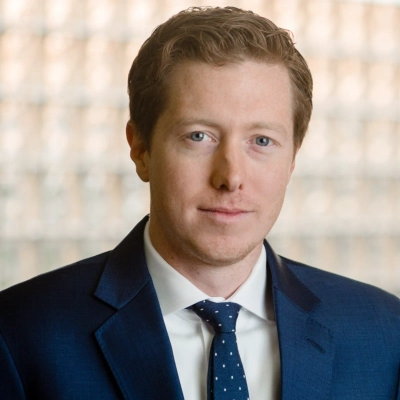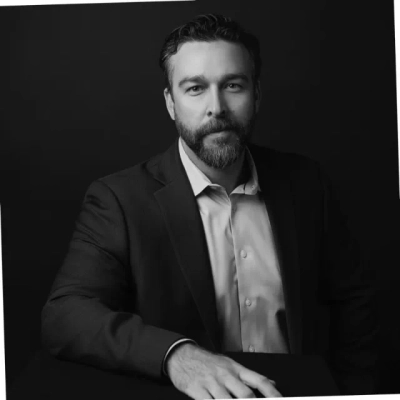11 Ways to Prioritize Financial Goals When Faced With Competing Objectives
Navigating the complex world of financial goals can be challenging, especially when faced with competing objectives. This article explores effective strategies for prioritizing financial decisions, drawing insights from industry experts. Readers will discover practical approaches to balance urgent needs with long-term stability while aligning their financial goals with personal and business values.
- Balance Emotional ROI with Financial Strategy
- Prioritize Urgent Needs and Long-Term Stability
- Align Financial Goals with Personal Values
- Invest in Safety to Build Business Strength
- Let Your Mission Guide Financial Decisions
- Expand Capacity to Meet Customer Demand
- Build Cash Reserves Before Pursuing Growth
- Choose Goals Reflecting Company Core Values
- Reduce Debt to Achieve Financial Freedom
- Focus Resources on High-Potential Projects
- Prioritize Cash Flow for Long-Term Resilience
Balance Emotional ROI with Financial Strategy
When I was faced with competing financial goals—paying down debt, saving for long-term investments, and building a cash buffer—I realized the decision couldn't just be about numbers on a spreadsheet. It had to reflect both logic and my personal circumstances.
What tipped the scales for me was asking a simple question: what would give me the most peace of mind right now while still setting me up for the future? At the time, I had young kids and was running a growing business, which meant unpredictability was the norm. While aggressive investing looked good on paper, I knew that without a safety net, any unexpected setback could derail everything. That clarity led me to prioritize building an emergency fund first.
Once that buffer was in place, the stress I didn't even realize I was carrying started to lift. Decisions became easier because I wasn't operating from a place of fear. With stability secured, I could then shift energy toward higher-yield goals like long-term investments and business reinvestment.
What I learned is that prioritizing financial goals isn't just about ROI—it's about emotional ROI. The "best" decision on paper isn't always the right one for your life stage, your family, or your risk tolerance. For me, peace of mind was the multiplier that made every other financial move more effective.
Balancing ambition with security has shaped how I approach money ever since. I don't see it as choosing one goal forever, but as sequencing them in a way that reflects both where I am and where I want to go. That shift—from rigid strategy to personal alignment—made all the difference.
Prioritize Urgent Needs and Long-Term Stability
Prioritization was achieved through evaluating both urgency and long-term stability. When faced with competing objectives—paying down debt, building reserves, and investing in growth—I ranked each by the immediate risk it posed if left unattended. High-interest debt moved to the top because the cost of delay compounded daily.
Personal factors also played a role. Having a young family shifted my decision-making toward creating an emergency fund alongside debt reduction. That balance meant sacrificing some investment opportunities in the short term, but it provided security and reduced stress. The lesson was that financial goals are not chosen in isolation; they reflect both numerical logic and personal circumstances that define acceptable risk.

Align Financial Goals with Personal Values
When faced with multiple financial goals, I start by evaluating each objective's timeline, impact, and risk profile. I prioritize goals that are critical to long-term financial security, such as retirement planning or debt reduction, over short-term wants. I use a structured framework to measure each goal against personal and market factors, ensuring the plan remains flexible under changing conditions.
Personal values play a key role. I consider which goals align with my principles and long-term aspirations. For example, ensuring financial stability for future obligations or protecting loved ones often outweighs discretionary spending. I also factor in my risk tolerance, understanding what level of market exposure I'm comfortable with, which allows me to sequence goals realistically.
Finally, I regularly reassess priorities. Financial planning is dynamic, and personal circumstances, career shifts, family needs, or unexpected expenses can change the hierarchy of objectives. By combining quantitative analysis with personal reflection, I ensure my decisions are both prudent and aligned with my values.

Invest in Safety to Build Business Strength
When running a small business, you don't have "competing financial objectives." You have priorities, and they're all about keeping the business solid. The biggest financial decision I had to make early on was between buying new equipment or hiring more people. Both were important for growing the business, but I couldn't do both at the same time.
My personal factor in the decision was simple: I had to protect my crew. The old equipment we had was getting old and unreliable. It was slowing us down and, more importantly, it was a safety concern. I knew that if I didn't replace it, we were going to have a breakdown on a job site, which could have led to a costly delay or, worse, an injury. On the other hand, if I hired more people, we could take on more work and grow bigger. But what good is a larger crew if the equipment they're using is a hazard?
I decided to prioritize the new equipment. It was a tough choice because it meant we couldn't take on as many jobs as I wanted to. I had to turn down work. But I knew that a bigger business wasn't worth anything if it was built on a risky foundation. I bought the new tools, and I made sure every single piece of equipment we had was safe and reliable.
That decision paid off in a big way. My crew knew that I cared about their safety, and that built a lot of trust. We became more efficient because the new equipment didn't break down, and the quality of our work went way up. That one decision, which was influenced by my personal commitment to my crew's safety, made my business stronger and more profitable in the long run. My advice to other business owners is to always prioritize the safety of your people over the profits. It's the only way to build a business that lasts.
Let Your Mission Guide Financial Decisions
We faced a significant decision between two competing objectives. It was a choice between investing in a new marketing campaign to attract more clients and providing a deeper, unproven level of care for our existing ones. One was a business decision, and the other was a mission decision. It was a difficult call, as both were beneficial for the company.
I didn't make that decision by examining a spreadsheet. I gathered my team and asked them, "What would be the most valuable thing we could do for a person in recovery?" We allowed our mission to guide the financial decision. We chose to invest in the new therapy program, even though the return on investment was more challenging to measure. We decided to prioritize the depth of care over the number of clients we could bring in.
The most significant personal factor that influenced my decision is that I can't view a client as merely a customer. I am a part of their journey. My own experience in this field has taught me that a person's well-being is more valuable than any figure on a balance sheet. My own humanity drives my decisions.
My advice is straightforward: don't let a business decision make you forget your purpose. The most effective way to make a financial decision is to let your humanity be your guide. The real "win" for a business isn't its bottom line; it's its ability to stay true to its purpose.
Expand Capacity to Meet Customer Demand
The initial phase of Oakwell development required me to decide between expanding spa facilities or using funds for marketing or staff recruitment to reduce my daily workload. I decided to expand the spa room capacity. Why? Because we had demand. The high customer demand forced people to wait for booking slots, which extended to multiple weeks. The decision to expand spa rooms made sense because refusing customers would render advertising expenses useless.
I worked seven days straight, but I continued to believe that building operational capacity should be my top priority before I could take a break. The path I chose was not the one that others would have selected. The sense of urgency developed through direct contact with actual guests who created genuine momentum for the business. The actual guests and their real momentum became the deciding factors for our business priorities.

Build Cash Reserves Before Pursuing Growth
When weighing multiple objectives, I prioritized building a strong cash reserve before pursuing expansion. The decision came after assessing the volatility of seasonal revenue in property services and recognizing how unexpected equipment breakdowns or storm-related demand spikes could strain operations. Having three months of operating expenses in reserve gave stability that growth alone could not provide.
Personal experience also shaped the choice. Early in my career, I witnessed a colleague lose his contracting business because he took on debt for a new division without a safety cushion, leaving him vulnerable when client payments lagged. That example made me cautious about overextending.
The reserve became the anchor, giving confidence to later pursue new service lines and property investments. The process reinforced that financial goals cannot be ranked in isolation; they must be tested against both external market pressures and personal risk tolerance shaped by lived experiences.

Choose Goals Reflecting Company Core Values
In a small business, one often faces competing financial goals. Should we invest in a new marketing campaign to attract new customers, or should we invest in a new inventory system to improve operational efficiency? My personal values of long-term stability and integrity heavily influenced my decision-making. I realized that our financial goals should directly reflect our company's core values.
I was presented with a choice between a short-term marketing campaign that would attract many customers but wasn't sustainable, and a new inventory system that had a higher upfront cost but would build a stronger, more resilient business. I chose the latter, prioritizing a goal that aligned with our core values of long-term stability and integrity.
The impact of this decision was a significant increase in our business's resilience. The new inventory system, while not as flashy as a new marketing campaign, has made our operations more efficient and our customers more loyal. The greatest benefit is that we've built a foundation of trust that will help us navigate any challenge.
My advice is that the best way to determine which financial goal to prioritize is to align them with your company's core values. The financial goal should directly reflect who you are as a company. When you do this, you build a foundation of trust and create a resilient business.

Reduce Debt to Achieve Financial Freedom
I placed debt reduction ahead of other objectives because of the spiritual and emotional weight it carried. Carrying balances meant living with constant strain, which in turn affected generosity and long-term stability. The decision was shaped less by spreadsheets and more by values. I wanted freedom to give without hesitation and to lead my family without the shadow of interest payments. Once that priority was set, other goals such as saving for future projects or building an emergency fund fell into place more naturally. The focus on clearing debt first created momentum and confidence. It also taught me that financial decisions cannot be separated from personal convictions. Aligning money management with core beliefs brought clarity, even when competing objectives made the path forward look complicated.

Focus Resources on High-Potential Projects
When facing competing financial objectives, I prioritize based on potential return balanced with available resources and community impact. In one instance, my brother and I decided to concentrate our funds on renovating a single property with high potential rather than dividing our resources across multiple smaller projects. This decision came after careful analysis of market comparables and an honest assessment of our team's capacity to execute effectively. The personal factors that most influenced this decision were my commitment to community improvement and a strategic approach that values focused excellence over scattered efforts.
Prioritize Cash Flow for Long-Term Resilience
When presented with several conflicting financial goals, how did you decide which one to prioritize?
Assessing which objective maintains flexibility while advancing you toward long-term growth is crucial. Since cash flow and liquidity build resilience when markets change, I've always tended to prioritize them over less pressing goals. Other goals, such as growth or innovation, can be more easily pursued without endangering stability once liquidity is stable.
What individual factors affected your choice?
Risk tolerance and the effect on those who rely on me are the two most notable factors. As a founder, I had to consider what would provide security for clients, partners, and staff in addition to what would be best for me. Even when more ambitious opportunities appeared alluring, this larger view frequently swayed the scales in favor of choices that safeguarded cash flow and operational health.






